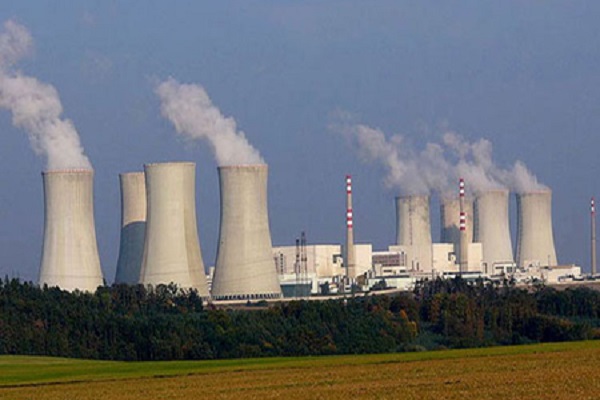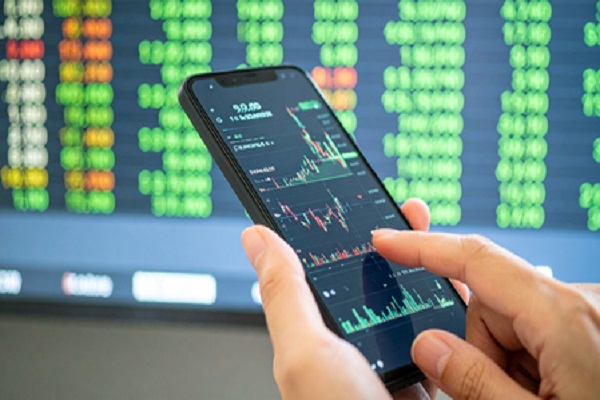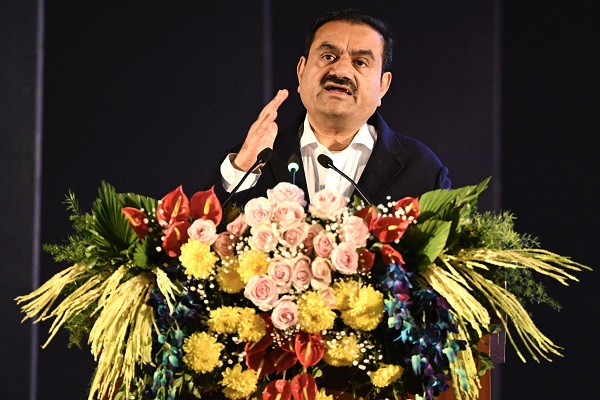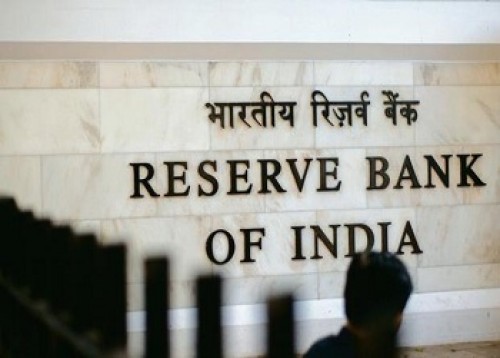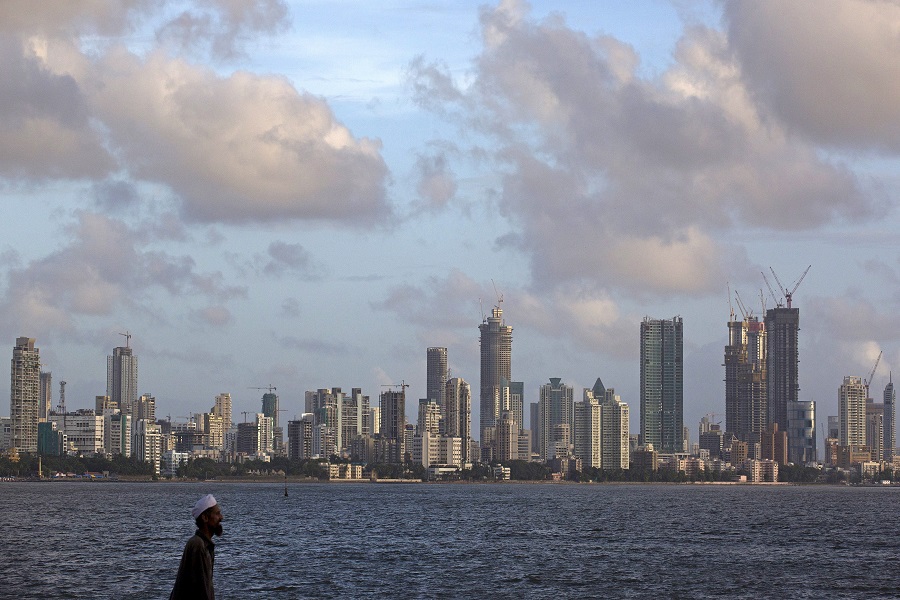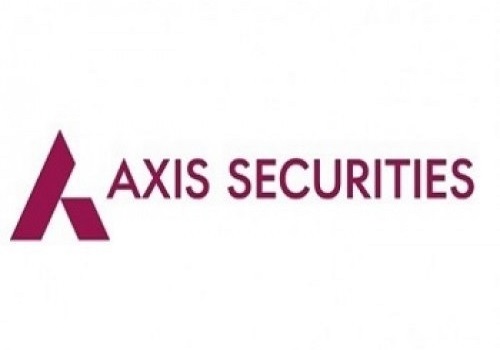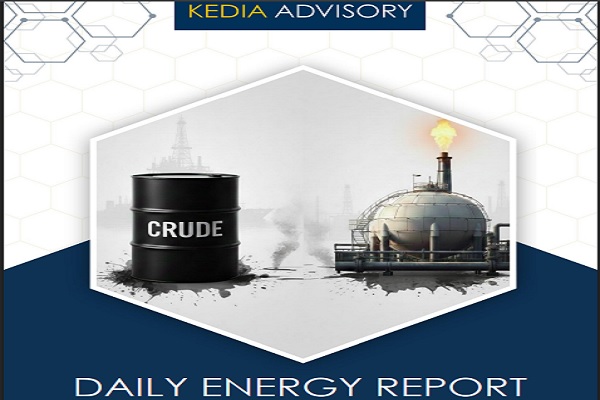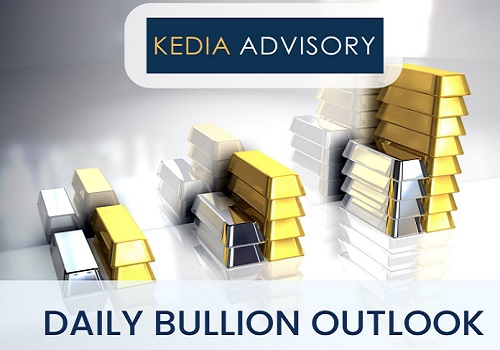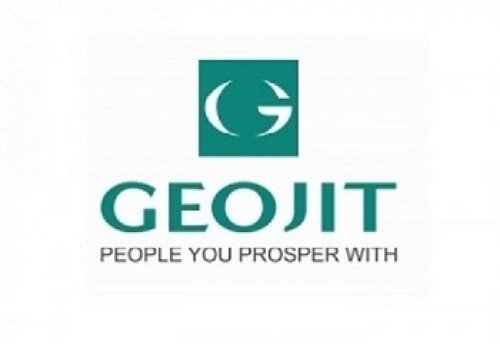Gold trading range for the day is 96555-97345 - Kedia Advisory

Gold
Gold prices inched up by 0.21% yesterday to settle at 96,990, extending gains for the week as fiscal and trade worries outweighed the drag from strong US labor market data. The approval of President Trump’s sweeping tax-and-spending package by the House renewed concerns about the ballooning US deficit, expected to surge by over $3 trillion over the next decade. At the same time, fresh tariff uncertainty emerged after Trump announced he would begin notifying countries about new import rates, marking a shift from previous plans to negotiate individual deals. These developments supported gold’s safe-haven appeal, helping the metal stay on track for a weekly gain of over 2%—its first positive close in three weeks. Central banks continued to show confidence in gold’s long-term role as a hedge and diversifier. Net purchases rose by 20 tonnes in May, with Kazakhstan, Turkey, and Poland leading buying activity, even as Singapore trimmed reserves by 5 tonnes. On the physical front, demand remained muted in Asia as high prices kept consumers sidelined. Indian dealers reduced discounts to $14 an ounce amid softer imports, while Chinese dealers lifted premiums up to $33 an ounce, signaling stronger interest compared to last week. Technically, the market is under fresh buying with open interest climbing 2.45% to 12,379 while prices rose by 208 rupees. Gold has immediate support at 96,770, with a break lower likely testing 96,555. On the upside, resistance stands at 97,165, and a move above could open the door towards 97,345.
Trading Ideas:
* Gold trading range for the day is 96555-97345.
* Gold steadied as US fiscal deficit concerns and tariff uncertainty boosted safe-haven buying interest.
* House passed Trump’s massive tax-and-spending cuts, adding over $3 trillion to deficit projections.
* Strong US jobs data capped gains; June payrolls rose by 147,000, jobless rate fell unexpectedly.
Silver
Silver prices edged up by 0.18% yesterday to settle at 108,429, as renewed global trade tensions and fiscal concerns lifted the metal’s safe-haven appeal despite a stronger US labor market keeping gains in check. Investors remained cautious after President Trump announced he would begin sending formal notifications outlining new tariff rates or deadline extensions by Friday, stoking fresh uncertainty over global trade flows. Meanwhile, the US House of Representatives passed Trump’s sweeping tax and spending bill, which now awaits presidential sign-off. The legislation, projected to widen the US budget deficit by more than $3 trillion, reinforced worries about long-term fiscal sustainability, further supporting safe-haven inflows into precious metals like silver. However, strong US employment data capped silver’s upside. The economy added 147,000 jobs in June, well above the expected 110,000, while the jobless rate unexpectedly dipped to 4.1% versus expectations of 4.3%. Average hourly earnings rose 0.2%, slightly below forecast but still highlighting underlying labor market resilience. These figures reduced immediate pressure on the Federal Reserve to cut rates, limiting silver’s bullish momentum. Technically, silver is under fresh buying as open interest climbed by 0.76% to 16,443 lots while prices gained 193 rupees. Support lies at 107,930, with a break below opening the door to test 107,435. Resistance is pegged at 108,710, and a move above could push prices toward 108,995 in the near term.
Trading Ideas:
* Silver trading range for the day is 107435-108995.
* Silver held firm as renewed global trade tensions lifted safe-haven demand among cautious investors.
* Trump plans new tariff letters or deadline extensions Friday, keeping global markets on edge.
* Strong US jobs report capped gains; June payrolls rose 147,000, unemployment fell unexpectedly.
Crude oil
Crude oil prices closed lower by -0.59% at 5690 yesterday, weighed down by expectations that OPEC+ producers will continue to raise output and by renewed hopes for progress in the U.S.-Iran nuclear talks. Iran’s reaffirmation of its commitment to the nuclear Non-Proliferation Treaty and the possibility of resuming talks next week added to the downside pressure. OPEC’s output rose by 270,000 bpd in June, driven mainly by Saudi Arabia, while Iraq’s underproduction helped offset some of the increase. Meanwhile, U.S. crude inventories rose unexpectedly by 3.845 million barrels last week, defying forecasts for a draw, although stocks at the Cushing hub fell by 1.493 million barrels. Gasoline inventories climbed by over 4 million barrels while distillates dropped by 1.71 million barrels, adding mixed signals for refined product demand. On the outlook front, Barclays revised up its Brent forecasts to $72/bbl for 2025 and $70/bbl for 2026, citing resilient fundamentals despite easing geopolitical tensions. The IEA maintained its projection that global oil demand will peak by 2029 at 105.6 million bpd, with capacity expected to exceed demand at 114.7 million bpd by 2030, suggesting a well-supplied market in the medium term. Technically, the market shows fresh selling pressure as open interest rose by 2.03% while prices fell by 34 rupees, signaling active short positions. Crude oil finds immediate support at 5651, with a break below likely to test 5611, while resistance is pegged at 5733 and above that at 5775.
Trading Ideas:
* Crudeoil trading range for the day is 5611-5775.
* Crude oil fell on expectations OPEC+ will raise output at upcoming meetings.
* OPEC+ speeds up oil output hikes, adds 548,000 bpd in August
* OPEC output rose 270,000 bpd in June, led by Saudi Arabia’s larger production increase.
Natural gas
Natural gas prices edged lower by -0.58% to settle at 290.8 yesterday, pressured by continued signs of robust supply growth and larger-than-expected storage builds. The latest EIA data showed that U.S. utilities added 55 billion cubic feet (bcf) of gas to storage for the week ending June 27, exceeding market expectations of a 53 bcf increase and well above the 35 bcf added in the same period last year. Although the build was slightly below the five-year average of 61 bcf, it marked the 11th consecutive week of above-average injections, reflecting ample supply conditions. Despite this, hotter mid-July weather forecasts are expected to boost air-conditioning demand and gas-fired power generation, offering some support to prices. LNG export demand is also gaining traction, with average flows to major U.S. LNG plants rising to 15.4 billion cubic feet per day (bcfd) in early July, up from 14.4 bcfd in June, as facilities return from spring maintenance. Golden Pass LNG’s request to re-export LNG from October signals additional export capacity coming online. The EIA’s latest Short-Term Energy Outlook forecasts record highs for both output and demand in 2025, with dry gas production projected at 105.9 bcfd and consumption at 91.3 bcfd. LNG exports are forecast to rise further, reaching 14.6 bcfd next year. Technically, the market is under fresh selling pressure with open interest gaining by 2.68% to 24,999 while prices slipped by -1.7 rupees. Natural gas finds immediate support at 288.2; a break below could see prices testing 285.5, while resistance is likely at 293.7 and above that at 296.5.
Trading Ideas:
* Naturalgas trading range for the day is 285.5-296.5.
* Natural gas fell after EIA data showed the 11th straight week of above-average storage injections.
* US storage rose by 55 bcf last week, beating expectations but below five-year average.
* Meanwhile, hotter mid-July forecasts are expected to drive up air-conditioning demand and gas-fired power usage.
Copper
Copper prices slipped by -0.77% to settle at 891.9 yesterday, pressured by renewed concerns over global demand amid fresh tariff threats from the U.S. President Trump’s announcement that his administration will soon notify 10 to 12 countries about new tariff rates reignited trade tensions and weighed on sentiment. The recent copper rally had been supported by tight global supplies and uncertainty around tariffs, prompting traders to reroute shipments to the U.S., which led to significant inventory drawdowns at the London Metal Exchange (LME) and Shanghai Futures Exchange (SHFE). However, the latest SHFE data showed that copper inventories rose by 3.7% from last Friday, signaling a slight easing in immediate supply constraints. The COMEX premium over LME prices remained elevated at around $1,300 per ton, while canceled warrants on the LME stood at 31,900 tons, indicating steady physical demand. On the macro side, a private survey revealed that Chinese manufacturing activity unexpectedly returned to growth in June, suggesting that the world’s largest copper consumer could see improved demand if trade tensions ease further. The global refined copper market posted a deficit of 50,000 metric tons in April, reversing a surplus from March, yet the market remains in surplus for the year to date. Technically, the copper market is experiencing long liquidation as open interest dropped by -2.77% to 8,154 while prices declined by -6.95 rupees. Immediate support is at 887.1, with a break below likely testing 882.2, while resistance is seen at 897.1 and above that at 902.2.
Trading Ideas:
* Copper trading range for the day is 882.2-902.2.
* Copper slipped as renewed demand concerns weighed on sentiment.
* Copper inventories in warehouses monitored by the Shanghai Futures Exchange rose 3.7% from last Friday.
* The COMEX copper premium over LME prices stood at around $1,300 a ton, while canceled warrants, totalled 31,900 tons.
Zinc
Zinc prices edged lower by -0.29% to settle at 256.7 yesterday, weighed down by rising inventories and lingering concerns over sluggish manufacturing demand in China. Latest data showed that zinc inventories in warehouses monitored by the Shanghai Futures Exchange climbed 4% from last Friday, with deliverable zinc stocks increasing by 800 tonnes in the last week of June. This suggests that manufacturers are taking fewer deliveries amid persistent weakness in factory activity, as highlighted by China’s official PMI remaining in contraction territory. Despite the weak demand backdrop, the US dollar index recovered following a stronger-than-expected U.S. jobs report, which showed 147,000 new jobs in June, easing worries about the health of the labor market but adding some resistance for metals priced in dollars. On the supply side, global mined zinc output is facing notable constraints. Teck Resources’ Red Dog Mine output dropped 20% annually in Q1, while Australia’s Nyrstar announced it will cut this year’s output by 25% due to ore shortages and uncompetitive treatment charges. Although the global zinc market showed a surplus of 16,000 metric tons in April, this was down from 23,400 tons in March, indicating tightening supply conditions. Technically, the zinc market is under fresh selling pressure as open interest rose by 1.29% to 3,466 while prices slipped by 0.75 rupees. Immediate support is seen at 255.8, with a break below potentially testing 254.8, while resistance is likely at 258.1 and a move above could push prices to 259.4.
Trading Ideas:
* Zinc trading range for the day is 254.8-259.4.
* Zinc prices dropped as SHFE inventories rose 4% from last Friday
* Dollar index rebounded after stronger-than-expected US jobs data eased labor market slowdown worries.
* China’s official PMI stayed in contraction, keeping zinc demand outlook pressured by manufacturing weakness.
Aluminium
Aluminium prices slipped by -0.26% to settle at 248.5 yesterday, weighed down by rising exchange inventories and persistent signs of subdued demand. Aluminium stocks in LME warehouses have increased by over 20,000 tons since June 25, reaching 356,975 tons, while cancelled warrants remain low at just 2%, indicating limited near-term withdrawals. On-warrant stocks have stayed higher since the start of the year, though combined inventories at the LME and SHFE are still about 60% lower than the same period last year, suggesting the broader supply situation remains tighter than headline figures imply. On the production side, China’s aluminium output climbed 5% year-on-year in May to 3.83 million metric tons, bringing total production for the first five months of the year to 18.59 million tons, up 4% compared to last year. However, the domestic manufacturing sector remains in contraction, as reflected in the latest official PMI data, which limits the optimism around demand recovery. Japanese aluminium buyers have managed to negotiate sharply lower premiums for July–September shipments at $108 per metric ton, down 41% from the previous quarter, highlighting weaker demand and ample supply in Asia. Aluminium stocks at Japan’s three major ports also rose 3.3% in May, signaling steady inventory build-up. Technically, the aluminium market is under long liquidation as open interest dropped by 3.12% to 3,970 while prices declined by -0.65 rupees. Aluminium finds immediate support at 247.8, with a break below likely testing 247, while resistance is seen at 249.3 and a move above could push prices toward 250.
Trading Ideas:
* Aluminium trading range for the day is 247-250.
* Aluminium dropped as LME stocks climbed more than 20,000 tons to 356,975 tons since June 25.
* Aluminium inventories in warehouses monitored by the Shanghai Futures Exchange rose 0.40% from last Friday.
* The manufacturing PMI compiled by the official Chinese NBS reflected another month of contraction in the sector.
Turmeric
Turmeric prices closed lower by -1.47% at 13,398 yesterday, pressured by expectations of higher acreage for the current sowing season due to favourable monsoon conditions. Arrivals in the physical markets rose to 13,660 quintals from 11,940 quintals in the previous session, indicating marginally better availability and steady inflows from producing regions. Preliminary estimates suggest that turmeric acreage could expand by 15-20% this season as dry weather supports timely planting and other crop options appear less profitable for farmers. The area under turmeric for the 2024–25 season is estimated at 3.30 lakh hectares, up about 10% from the previous year’s 3 lakh hectares. However, the rise in acreage may not translate fully into higher output, as untimely rains have damaged crop quality in key areas like Nanded, where smaller rhizomes and crop rot are expected to lower yields by 10–15%. Despite near-term pressure, downside remains limited due to concerns over reduced productivity and steady demand for good-quality fresh arrivals. At the Duggirala market, new crop supplies continue to attract strong buyer interest, with fresh stock commanding higher prices than older inventory. Daily trading remains active, with about 50–55% of the new crop already traded, suggesting healthy demand even as the season nears its end. Technically, the market is under fresh selling as open interest rose slightly by 0.03% to 17,915 while prices dropped by 200 rupees. Turmeric finds immediate support at 13,284; a break below this could drag prices down to 13,168, while resistance is now likely at 13,564 and above that at 13,728.
Trading Ideas:
* Turmeric trading range for the day is 13168-13728.
* Turmeric prices dropped due to expected increase in acreage.
* Turmeric acreage is expected to increase by 15-20% this season, supported by low competitive crop prices.
* In April 2025 around 14,956.80 tonnes were exported as against 14,109.10 tonnes in April 2024 showing a rise of 6%.
* In Nizamabad, a major spot market, the price ended at 14301.2 Rupees dropped by -0.35 percent.
Jeera
Jeera prices settled lower by -1.23% at 19,720 yesterday, as weak domestic and export demand continued to weigh on sentiment following the end of the peak retail season. Traders attributed the recent decline to sluggish buying activity from overseas markets and sufficient stocks available with farmers and traders. Comfortable supply conditions are evident, with farmers still holding about 20 lakh bags of cumin, of which only 3–4 lakh bags are expected to be traded by the season’s end. Production prospects remain steady, with estimates pegging this season’s output at around 90–92 lakh bags, slightly lower than last year’s 1.10 crore bags due to a reduction in sowing area but supported by good crop conditions. Major producing states Gujarat and Rajasthan are estimated to contribute about 42–45 lakh bags and 48–50 lakh bags respectively. Globally, output in competing producers like Syria, Turkey, and Afghanistan remains constrained by geopolitical challenges and adverse weather, which has trimmed China’s crop estimates to 70–80 thousand tonnes from an earlier 1 lakh tonnes. However, the export scenario is uninspiring at present. India’s jeera exports in April 2025 fell sharply by 48.11% year-on-year to 19,719.60 tonnes but rose by 13.74% compared to March, providing a mixed signal for overseas demand. In the key Unjha spot market, prices ended slightly lower by -0.54% at 20,392.15 rupees. Technically, the market is under fresh selling as open interest increased by 1.41% to 4,956 while prices fell by -245 rupees. Jeera finds support at 19,530; a break below could see prices test 19,340, while resistance is likely at 19,980 and above that at 20,240.
Trading Ideas:
* Jeera trading range for the day is 19340-20240.
* Jeera dropped due to weak domestic and export demand post retail season.
* However downside seen limited on strong export demand and easing geopolitical concerns.
* Total arrivals witnessed a marginal increase to 12,000 bags (55 kg each) as against 11,800 bags on the previous day.
* In Unjha, a major spot market, the price ended at 20392.15 Rupees dropped by -0.54 percent.
Views express by all participants are for information & academic purpose only. Kindly read disclaimer before referring below views
